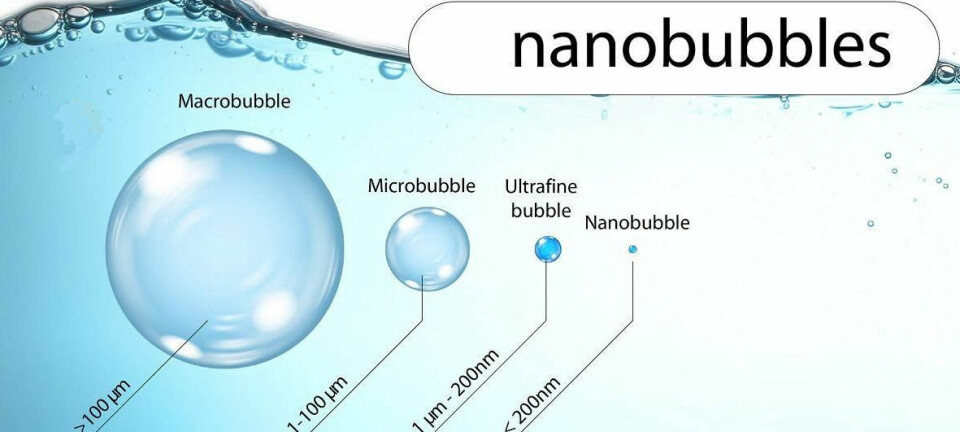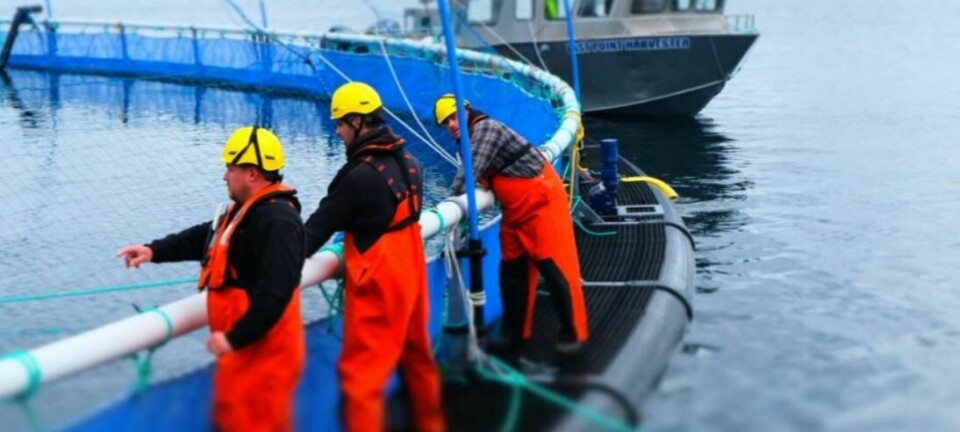
Smaller bubbles led to smaller bills and emissions for salmon farmer
A Norwegian fish farmer achieved a 60% reduction in carbon dioxide (CO2) emissions as well as cost savings during its delousing process by using nanobubbles, the company that supplies the technology says.
In the operation of oxygenation systems on aquaculture vessels, essential compressors and pumps are a major contribution to energy consumption and CO2 emissions.
But compared with traditional oxygenation systems, such as cones and diffusers, nanobubbles are significantly more efficient, writes Jan Eric Haagensen, Scandinavia director for US nanobubble generator producer Moleaer Inc.
During mechanical delousing operations, salmon must be crowded into a section of a pen before suctioning them into delousing lines on wellboats or workboats. This crowding leads to stress and often results in low oxygen levels. Maintaining optimal oxygen levels during crowding procedures is challenging, given the primary importance of fish welfare to operators, says Haagensen.
31kW oxygen pumps
“In attempting to address persistent low oxygen levels and improve fish welfare, a Norwegian aquaculture company initially equipped its vessels with four oxygen cones, powered by two 31kW pumps, delivering 220 cubic metres of water at 3 bar each,” writes the Moleaer executive.
“While the cones succeeded in adequately oxygenating the water, the process proved to be highly energy-intensive and costly. Shifting strategies, the company transitioned to injecting oxygen with diffuser hoses. While this eliminated the energy consumption of cone pumps, the significantly lower oxygen transfer efficiency required much larger volumes of oxygen, driving up production costs. Additionally, the bubble sizes generated by the diffuser hoses hindered the accuracy of the fish counting system.”
Seeking a more effective solution, the company opted to try nanobubble technology. In the spring of 2021, the company installed Moleaer’s Trinity L2 nanobubble generator, strategically positioned on a support structure above the connection point of the loading hoses to the delousing system.
Superior efficacy
“The system demonstrated superior oxygen transfer efficacy by injecting only a fraction of the typical amount of oxygen needed to support 200 tons of fish. The successful integration of nanobubble technology marked a significant advancement in not only addressing the company’s oxygenation requirements but also in its initiatives to lower CO2 emissions,” writes Haagensen.
The aquaculture company improved both oxygen and energy, reducing CO2 emissions while providing increased oxygenation to its salmon during delousing crowding. It recorded a 63% reduction in energy consumption vs. cone pump + PSA (pressure swing adsorption) oxygen generator, and a 57.1% reduction in oxygen consumption compared to cones during normal operations.
A 22.9% reduction in oxygen consumption from a PSA generator (while adding a pump) and 73.2% reduced oxygen consumption was achieved compared to diffuser hoses at maximum capacity.
The system is still in operation and the company went on to fit Moleaer nanobubble generators to a further two vessels. The potential payback period for investing in this technology instead of diffuser hoses is calculated at approximately 18 months, says Haagensen.
























































